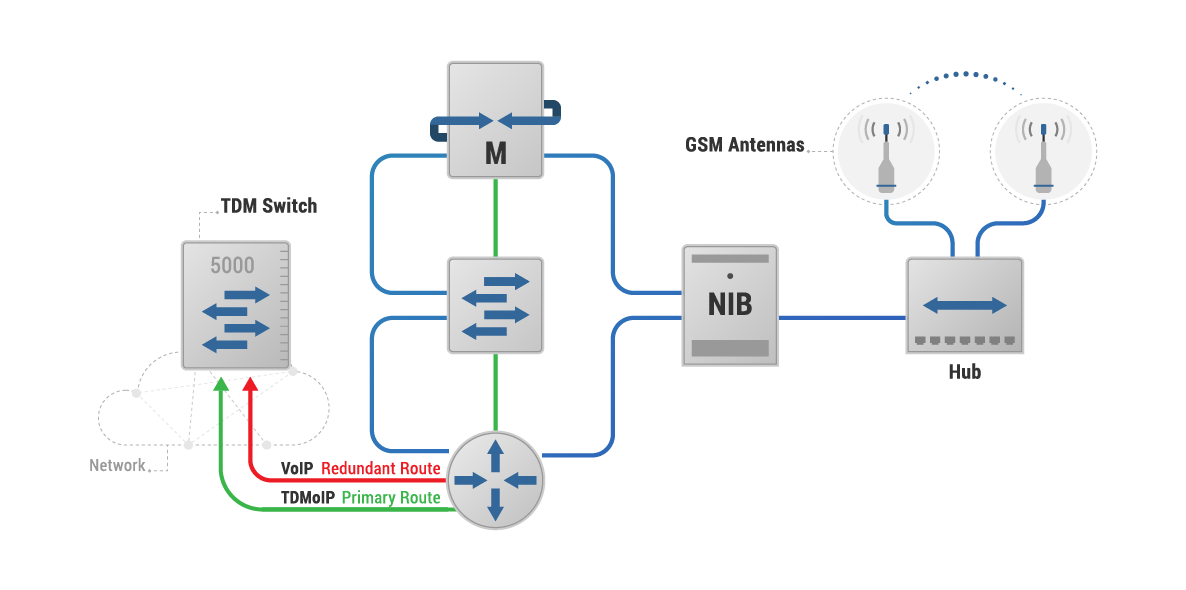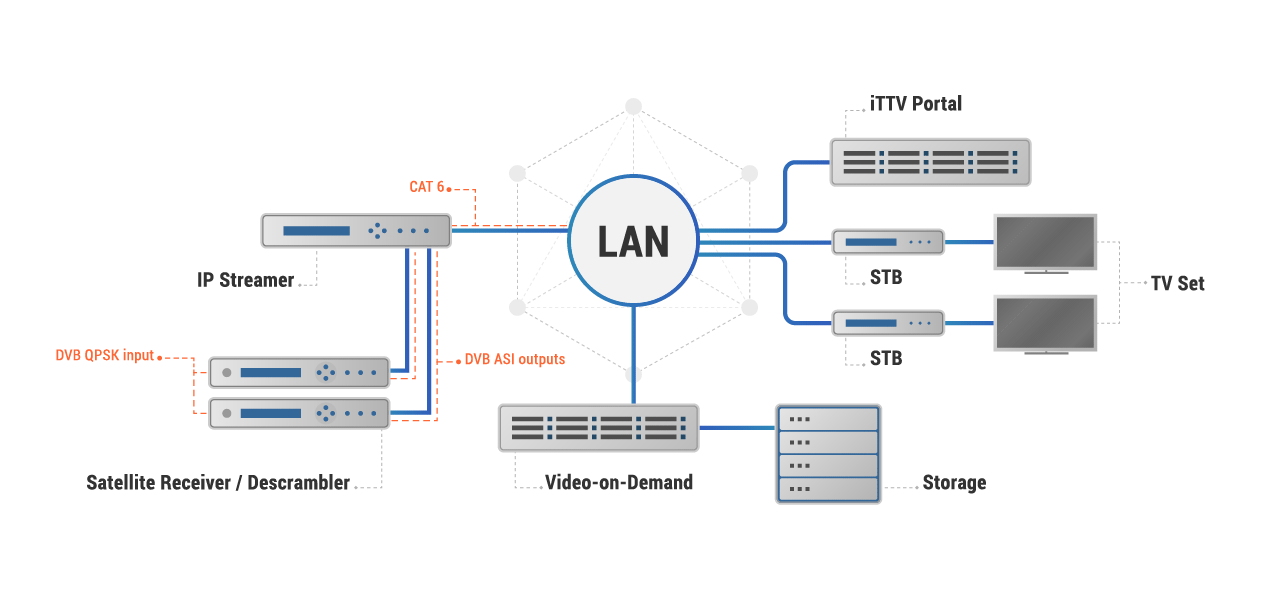IP Telephony/ Ethernet/ Wireless 802.11 b/a Network Solution
The Ethernet and wireless network systems deliver:
- Redundant Network topology with dynamic fail-over links by utilizing Rapid SpanningTree protocol;
- 8000 Mbps (8Gbps) full-duplex redundant backbone trunks between core switches;
- Switched Ethernet 100Mbps full-duplex connections for the terminal equipment;
- Cisco POE (Power over Ethernet) provisioning for the IP Phones and wireless Access Points, utilizing the network cabling for providing power to the equipment;
- Wireless dual-band 802.11b/802.11a coverage of the specific areas;
- Transparent roaming of phones and laptops between the access points without interruption;
- Provision of QoS for voice traffic in the wireless network with dot1Q;
- Provision of QoS for voice and video in Ethernet switched network with dot1Q VLANs and dot1P CoS (Class of Service);
- Remote manageability of network switches and wireless Access Points.
The GSM Distribution Network proposed on the motor vessel used STP Cat 5 cabling to carry 1.8 GHz RF signal between NIB (Network In The Box) and GSM antennae installed in different decks on the board. The system covers all decks and a 400m diameter space. The solution will focus on providing one single NIB that feeds the entire network.

The GSM system has been designed to provide the following:
- Complete on-board GSM network that integrates an MSC (Mobile Switching Center), a BSC (Base Station Controller) and a BTS (Base Transceiver Station), working in the 1800 Mhz frequency. The GSM Distribution Network uses STP Cat 5 cabling to carry 1.8 GHz RF signal between NIB and GSM antennae installed in different decks on the board. The system covers all board space;
- Capacity of up to 14 simultaneous calls;
- Ability to make free of-charge-calls from on-board registered GSM mobile phones to IP telephones within the vessel;
- Ability to make free of-charge-calls from an on-board registered GSM mobile phone to another on-board registered GSM mobile phone;
- Ability to make calls free-of-charge from on-board registered GSM mobile phones to international destinations through VoIP;
- Ability to receive free-of-charge incoming calls from the ship’s IP Telephony to the on-board registered GSM mobile phones;
- Roaming of the GSM phones for incoming and outgoing calls, provided that interconnection agreement with land-based GSM provider is established;
- Remote manageability of the GSM Network.
The real-time video distribution network implemented on motor vessels uses IP as the carrier protocol. The system is designed to receive 20 digital video programs from a satellite. All selected video channels are split into Single Program Transport Streams before IP encapsulation. IP multicast uses UDP to transmit all live programs to the end user in each room of the motor vessel.
The distribution network equipment provides the following:
- 20 MPEG-2 encoded TV channels streaming to the end user;
- Access to Audio-on-Demand server consisting of over several thousand records;
- Access Video-on-Demand server consisting of more than a thousand records;
- The system solution is flexible so that the system can be easily expanded.

Stores 750 hours of content (4.4 Tbyte). The power supply available at the site is 220V AC, and the power is regulated using UPS.
The Redundant Continuous Power Supply System is used to carry power by Dual Maritime Cable N2XH-J 5x4mm2 (2Ph+2N+1G) between the Server Room and Broadcasting room. The solution will focus on providing redundant electrical supply feeding all equipment in the Broadcasting and Server Racks.
The Uninterrupted Power System has been designed to provide the following:
- Redundancy assurance;
- Power supply for the electrical equipment in the server room and broadcast room.
- Moreover, the Power System has a considerable margin of power supplied to other equipment.
